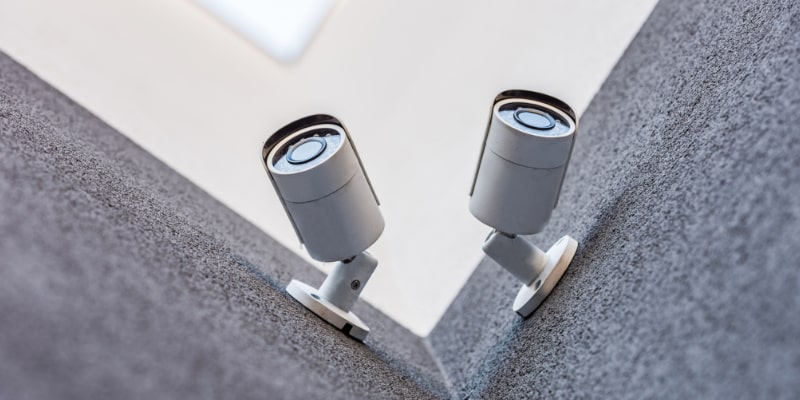Інтеграція систем відеоспостереження у стратегію маркетингу та реклами. Як посилити охорону та просування бізнесу одночасно?
У сучасному світі технологій та інформації інтеграція різних систем та інструментів у єдину мережу стає не просто модною тенденцією, а й стратегічною необхідністю для розвитку бізнесу. Так, системи контролю доступу (СКУД) та відеоспостереження давно перестали виконувати виключно функції безпеки та контролю, стаючи потужним інструментом у руках маркетологів та рекламників.
За останні роки впровадження СКУД та відеоспостереження для безпеки бізнесу неухильно зростає. Від простих камер, що фіксують те, що сталося, вони перетворилися на складні системи з можливістю розпізнавання осіб, аналізу поведінки і навіть передбачення певних дій. Однак крім очевидного застосування, охорона приміщення, вартість якої Ви можете дізнатися на сайті ВЕНБЕСТ, камери стали активно впроваджуватися і в сферу маркетингу.
Впровадження технологій СКУД та відеоспостереження у маркетингову стратегію дозволяє бізнесу глибше розуміти свого клієнта, оптимізувати рекламні кампанії, покращувати сервіс та підвищувати рівень лояльності. Саме цьому аспекту і буде присвячено цю статтю. Ми розглянемо, як системи відеоспостереження можуть стати незамінним помічником у просуванні бізнесу, і чому їхня інтеграція з маркетингом та рекламою є перспективним напрямком для сучасних компаній.
Переваги інтеграції систем відеоспостереження у маркетинг та рекламу
В інтегрованому просторі сучасного ринку монтаж відеоспостереження може стати мостом між класичним підходом до бізнесу та передовими маркетинговими стратегіями. Розглянемо ключові переваги такої інтеграції.
- Збір статистики та аналіз відвідуваності торгових зон. Системи відеоспостереження дають змогу детально аналізувати трафік відвідувачів магазинів або інших комерційних об’єктів. Дізнавшись, які зони найпопулярніші, можна ефективніше розміщувати рекламні стійки чи акційні товари.
- Вивчення поведінки покупців та оптимізація рекламних акцій. Камери можуть фіксувати, які товари викликають найбільший інтерес у відвідувачів, на які рекламні банери вони найчастіше реагують і як довго затримуються у певних зонах. Ці дані можуть бути основою для корекції рекламних кампаній та підвищення їх ефективності.
- Поліпшення якості обслуговування клієнтів. Завдяки аналізу відеоданих можна виявити «вузькі місця» у роботі персоналу, визначити періоди найбільшої напруги та раціонально перерозподілити співробітників для оптимального обслуговування клієнтів.
- Інтеграція із цифровими платформами. Сучасні системи відеоспостереження можуть інтегруватися з онлайн-платформами для ретаргетингу або персоналізованої реклами, дозволяючи бізнесу створювати об’єднані маркетингові стратегії для онлайн та офлайн просторів.
- Підвищення довіри та лояльності клієнтів. Розуміння того, що організація дбає не лише про безпеку, а й прагне покращити якість обслуговування на основі аналізу даних, може відіграти важливу роль у формуванні позитивного іміджу компанії.
Отже, використання систем відеоспостереження, наприклад, від компанії ВЕНБЕСТ, відкриває перед бізнесом нові горизонти і дозволяє виходити на більш високий рівень взаємодії з клієнтами.
Сучасні методи та інструменти
З розвитком технологій відеоспостереження та їх впровадженням у світ маркетингу з’явилося багато інноваційних методів та інструментів, які допомагають робити рекламні стратегії ще ефективнішими. Давайте розглянемо деякі з них.
- Аналітичне програмне забезпечення. Сучасні камери відеоспостереження оснащені програмним забезпеченням, здатним аналізувати дані в реальному часі. Це дозволяє відстежувати рух відвідувачів, їх інтерес до певних товарів та реакцію на рекламні акції.
- Розпізнавання облич та біометричні системи. Такі системи можуть ідентифікувати відвідувачів, дозволяючи проводити персоналізовані рекламні кампанії, наприклад, пропонувати знижки тим, хто вже купував.
- Теплові карти. Дозволяють візуалізувати активність у певних зонах магазину або об’єкта, показуючи, де знаходяться найбільш відвідувані місця.
- Інтеграція з мобільними програмами. За допомогою спеціалізованих мобільних додатків компанії можуть надсилати повідомлення відвідувачам, що знаходяться поряд із торговою точкою, пропонуючи їм акції або знижки.
- Системи віртуального помічника. Інтегруючись з камерами відеоспостереження, такі системи можуть надавати відвідувачам інформацію про товари, акції або відповіді на питання, що часто ставляться в реальному часі.
- Хмарні рішення та Big Data. Зберігання та аналіз великих обсягів даних з камер відеоспостереження у хмарних системах дозволяє швидко та ефективно проводити аналітику, прогнозувати поведінку клієнтів та коригувати маркетингові стратегії.
- Інтеграція із CRM-системами. Взаємодія систем відеоспостереження з базами даних про клієнтів дозволяє створювати точніші портрети покупців та ефективно керувати взаєминами з ними.
З урахуванням усіх цих нововведень, системи відеоспостереження перестають бути просто інструментом безпеки та перетворюються на потужний засіб для просування бізнесу, дозволяючи компаніям бути на крок попереду конкурентів та відповідати на запити сучасного ринку.
Практичні приклади
Інтеграція систем відеоспостереження та маркетингу вже дає реальні результати для багатьох компаній. Докладніше розглянемо кілька практичних прикладів успішного застосування такого підходу.
- Персоналізовані рекламні пропозиції. Торговий центр у Європі використовував системи розпізнавання осіб для того, щоб пропонувати відвідувачам індивідуальні знижки та акції на основі їхніх попередніх покупок чи інтересів, виявлених за допомогою аналізу відвідувань різних зон торгового центру.
- Аналіз ефективності рекламних банерів. Компанія, що займається продажем спортивного обладнання, встановила камери навпроти своїх рекламних банерів у метро. Аналіз показав, що певні види реклами більше привертають увагу тих, хто проходить, ніж інші. Ці дані допомогли компанії переглянути свою рекламну кампанію та зробити її більш ефективною.
- Поліпшення якості обслуговування у ресторані. Мережа ресторанів швидкого харчування, аналізуючи відеодані, виявила, що у певні години пік у них виникають проблеми з чергами та обслуговуванням. В результаті було прийнято рішення про перерозподіл співробітників та введення додаткових кас, що призвело до зменшення часу очікування та зростання рівня задоволеності клієнтів.
- Інтеграція з мобільними програмами в музеях. Деякі музеї почали використовувати дані з камер для того, щоб розуміти, які експонати є найбільш популярними серед відвідувачів. У поєднанні з мобільними програмами це дозволило створити інтерактивні гіди, що надають додаткову інформацію та рекомендації, виходячи з інтересів конкретного відвідувача.
Таким чином, практичне застосування систем відеоспостереження у маркетингу та рекламі вже доводить свою ефективність, допомагаючи компаніям краще розуміти своїх клієнтів та оптимізувати бізнес-процеси.
Експерт в області інтернет-маркетингу. Керівник маркетингового агентства MAVR.
Бізнес-ступінь “Майстер ділового адміністрування” (MBA).


